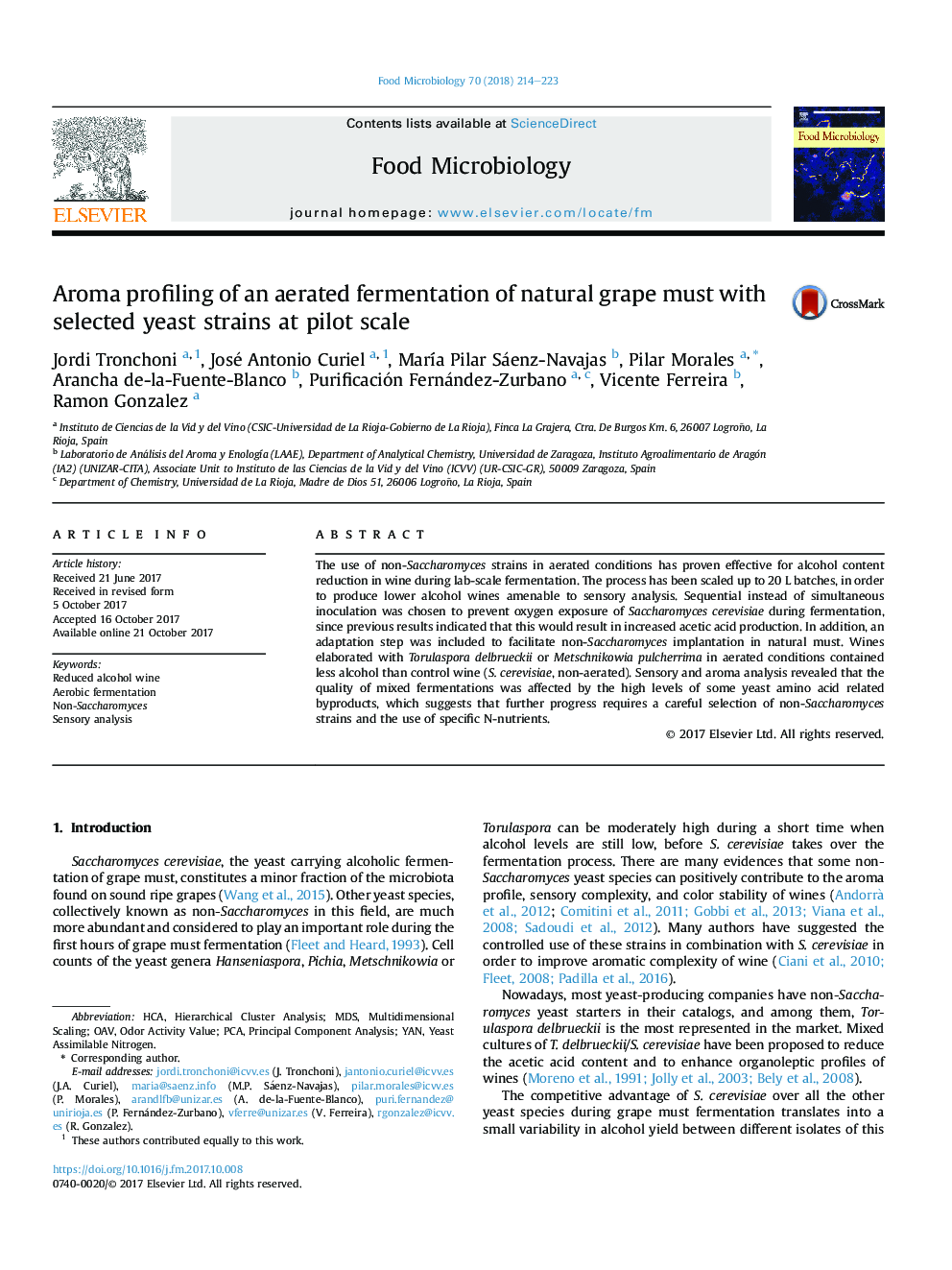| Article ID | Journal | Published Year | Pages | File Type |
|---|---|---|---|---|
| 8843620 | Food Microbiology | 2018 | 10 Pages |
Abstract
The use of non-Saccharomyces strains in aerated conditions has proven effective for alcohol content reduction in wine during lab-scale fermentation. The process has been scaled up to 20 L batches, in order to produce lower alcohol wines amenable to sensory analysis. Sequential instead of simultaneous inoculation was chosen to prevent oxygen exposure of Saccharomyces cerevisiae during fermentation, since previous results indicated that this would result in increased acetic acid production. In addition, an adaptation step was included to facilitate non-Saccharomyces implantation in natural must. Wines elaborated with Torulaspora delbrueckii or Metschnikowia pulcherrima in aerated conditions contained less alcohol than control wine (S. cerevisiae, non-aerated). Sensory and aroma analysis revealed that the quality of mixed fermentations was affected by the high levels of some yeast amino acid related byproducts, which suggests that further progress requires a careful selection of non-Saccharomyces strains and the use of specific N-nutrients.
Keywords
Related Topics
Life Sciences
Agricultural and Biological Sciences
Food Science
Authors
Jordi Tronchoni, José Antonio Curiel, MarÃa Pilar Sáenz-Navajas, Pilar Morales, Arancha de-la-Fuente-Blanco, Purificación Fernández-Zurbano, Vicente Ferreira, Ramon Gonzalez,
